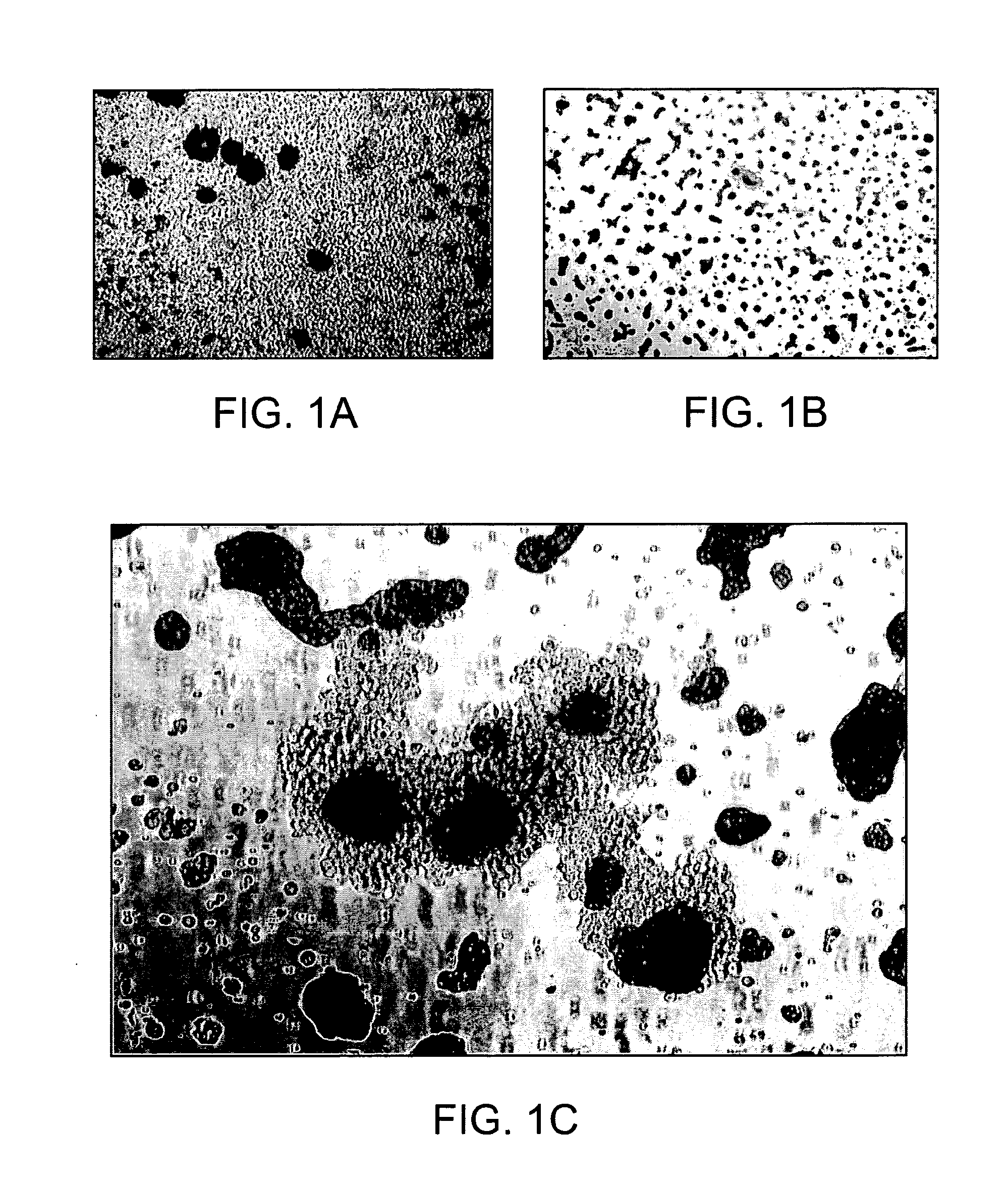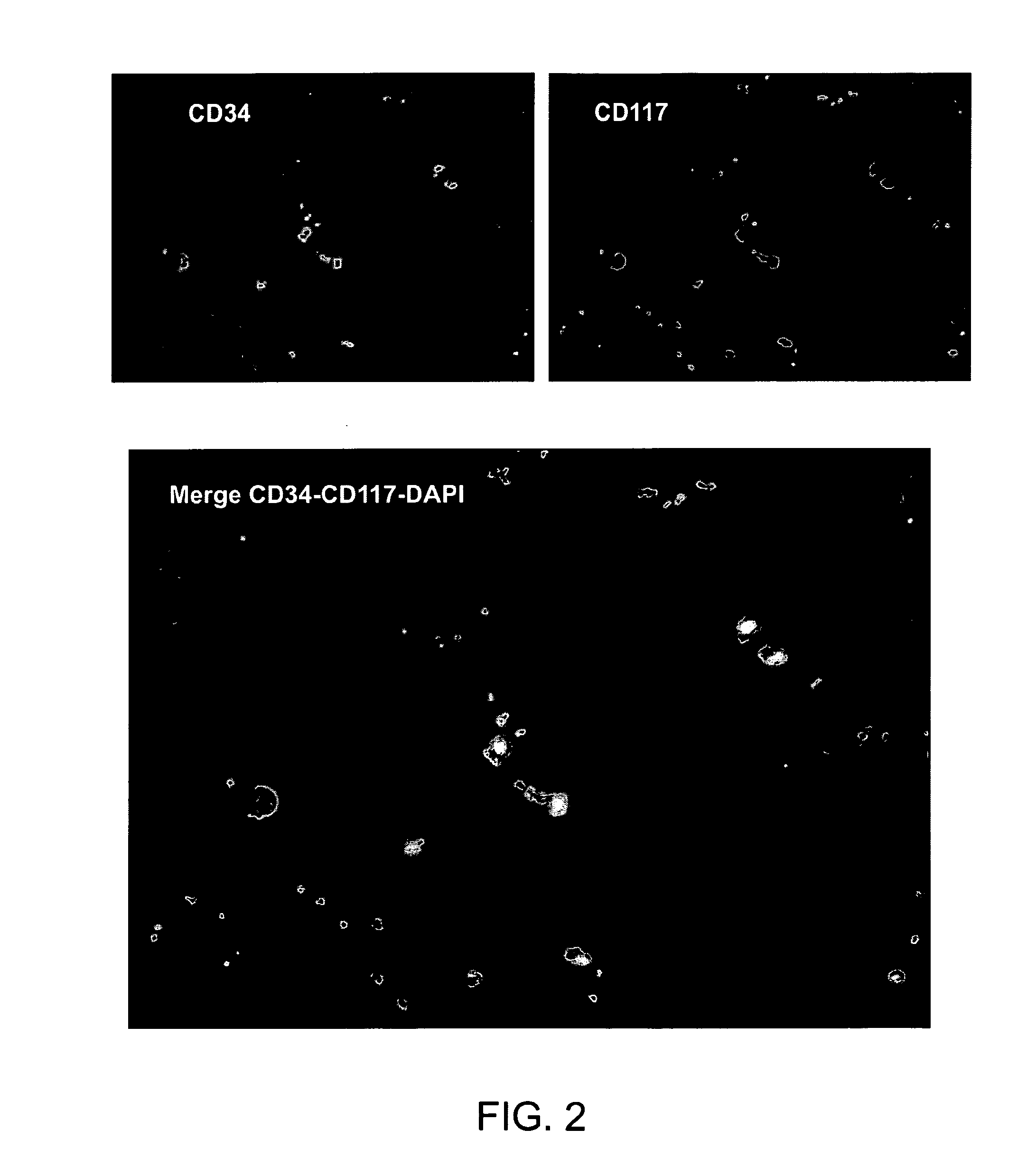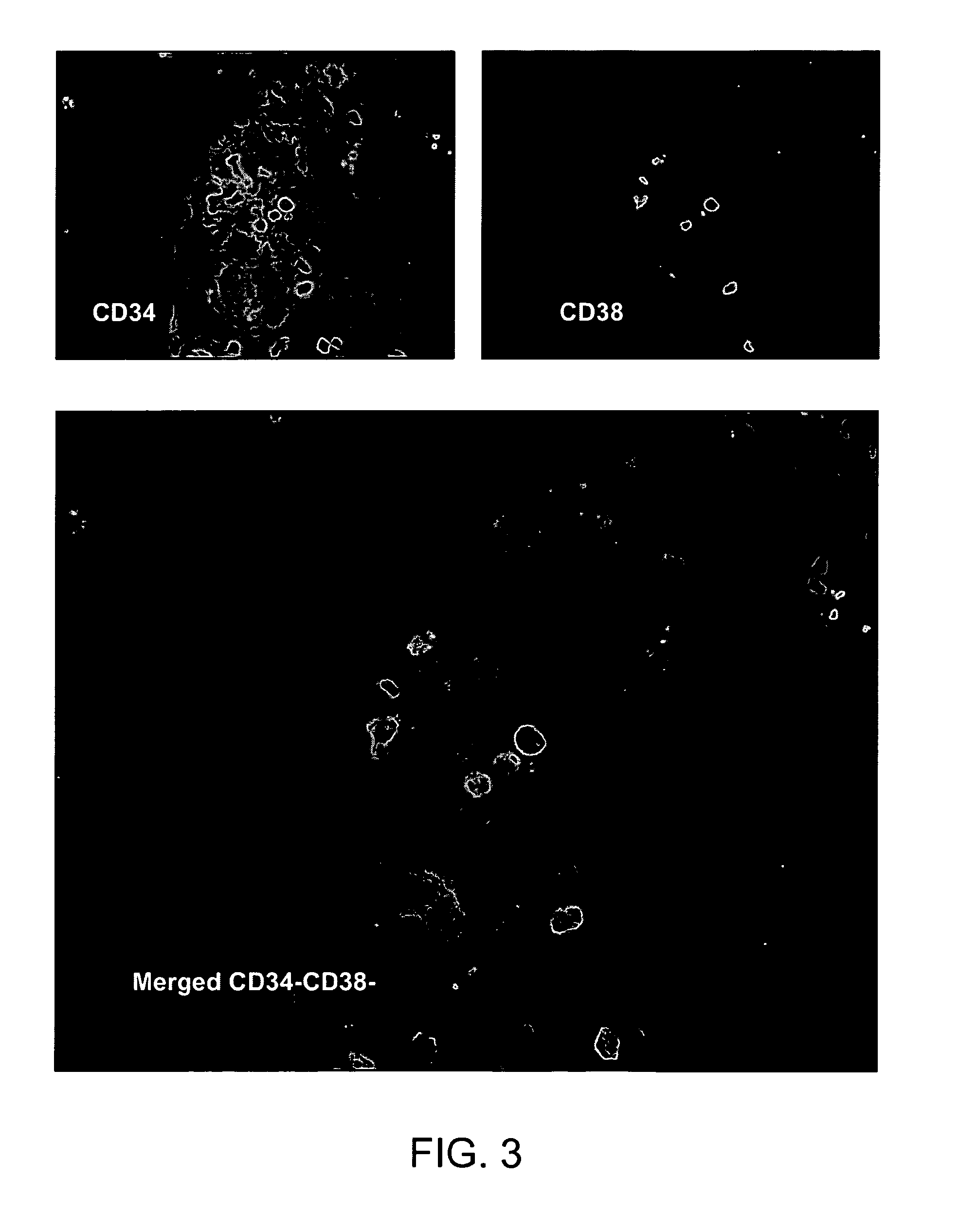Method of Isolating Stem and Progenitor Cells From Placenta
a technology of stem cells and placenta, which is applied in the field of isolating stem and progenitor cells from placenta, can solve the problems of limited stem cell sources, difficult to produce in significant numbers, and limited stem cell sources
- Summary
- Abstract
- Description
- Claims
- Application Information
AI Technical Summary
Problems solved by technology
Method used
Image
Examples
example 1
Cryopreservation of Mammalian Placenta; and Collection of Stem / Progenitor Cells from the Cryopreserved Placenta
Methods
[0097]Placenta perfusion and cryostorage: Following IRB approval and informed consent, human term placentas were obtained from healthy females following caesarian section at Alta Bates Hospital (Oakland, Calif.). Freshly obtained human placentas were used which have been subjected to a conventional cord blood recovery process by draining substantially all of the cord blood from the placenta. Placentas were first infused with in an anticoagulant / vasodilator solution (Heparin 30 U / ml, papaverin 0.05 mg / ml) at a temperature of 20 to 25° C. For perfusion procedures, artery and vein of umbilical cord were further cannulated, and connected to a perfusion circuit, which contains heat exchange unit, blood oxygenator, roller pump and perfusion reservoir. Blood oxygen tension and carbon dioxide tension, temperature of perfusate and perfusate flow rate were continuously monitor...
PUM
| Property | Measurement | Unit |
|---|---|---|
| temperature | aaaaa | aaaaa |
| temperature | aaaaa | aaaaa |
| temperature | aaaaa | aaaaa |
Abstract
Description
Claims
Application Information
 Login to View More
Login to View More - R&D
- Intellectual Property
- Life Sciences
- Materials
- Tech Scout
- Unparalleled Data Quality
- Higher Quality Content
- 60% Fewer Hallucinations
Browse by: Latest US Patents, China's latest patents, Technical Efficacy Thesaurus, Application Domain, Technology Topic, Popular Technical Reports.
© 2025 PatSnap. All rights reserved.Legal|Privacy policy|Modern Slavery Act Transparency Statement|Sitemap|About US| Contact US: help@patsnap.com



